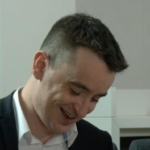Moving back through time it’s easy to see how platforms converge onto single devices or as a converged stack. An example of this is iPhone or Android devices bringing us the functions of music (Walkman), telephone (mobile), Internet (laptop) and a plethora of applications that were previously point products.
[easy-tweet tweet=”It’s easy to see how platforms converge onto single devices or as a converged stack” hashtags=”Cloud, CEE16″]
I was having a conversation with the Cloud Expo Europe team recently and wanted to share my thoughts about the converged platforms at each collocated event.
An analogy I will be using is that of a large multi-tenant building:
The foundations of the future stack: The data centre
Every building requires a foundation and the foundation of any cloud or hosted solution is the data centre. As well as performing this key role, the data centre is the conduit that allows utilities to be delivered to the building, such as power or electricity. The data centre is also the lifeblood of the often overlooked essential item of the cloud: ‘connectivity;’ the staple that supplies an Internet connection and allows SaaS/cloud and mobile applications to come alive on the device you are holding.
The apartments in the building: The cloud
A building is to be resided in, securely accessed and above all should be a comfortable, familiar environment for the tenants. In the cloud we have a plethora of options for segregating each apartment cost effectively, allowing for customised furnishings and a comfortable operating environment to be consumed.
The big advantage of this multi-tenant building is each apartment has ‘burst’ capacity that allows any relatives or friends to take short-term rentals by the minute, hour or month. These apartments are where the cloud systems are operated, consumed and developed upon.
Turn the heating down and dim the lights please: Smart IoT
From footsteps that can create electricity, to automated home heating programs, through to fitness monitoring applications. Today, Smart IoT (Internet of Things) is all around us both visible and obscurely embedded into everyday items.
Today we are in an age where intelligent sensors that are almost invisible to the eye are being mass produced to connect every conceivable item around us. From a drilling plant telling us the best place to locate oil, through to our fridges reading bar codes and automatically ordering goods online as they run out.
The huge computational horsepower required to ingest, store and analyse this plethora of data is located in the cloud. Add augmented reality into this mix, where IoT data will be reconstructed to allow for modelling machines and systems in virtual reality, and we have the beginnings of the virtual universe.
All this kit and no security? Cloud security
Any building holding high value items and contents should have a level of security corresponding to the value of replaceability within the system. This extends to the data we export that consumers trust us with and the documents that professionals such as lawyers (cough** lets not go there), healthcare and finance professionals are entrusted with.
Today’s security threats go way beyond what I would describe as physical entry to a building. Threats now range from the IoT device that switches on our lights at home to the toys our children play with. The security boundary is no longer just the office, this threat is the Internet connection we use within our homes and on the tablets we use to connect to our corporate systems.
Cloud security services provide the elastic perimeter that help to protect our physical and digital world.
Platform convergence
I hope you have enjoyed this blog and albeit brief journey into how I view the platforms converging into a single stack. Compare the Cloud are at Cloud Expo so why not come and visit us for a chat on this topic or take a wander over to our Disruptive Tech.tv stand. We love talking cloud and technology and we promise you we never sell anything….
You can register for your free ticket to Cloud Expo Europe, alongside Data Centre World, Smart IoT London and Cloud Security Expo, here.
[easy-tweet tweet=”#Cloud #security services provide the elastic perimeter to protect our physical and digital world.” hashtags=”CEE16″]
My name is Andrew McLean and I am the Chief Technology Office of Compare the Cloud. If you wish to arrange a briefing with us please contact [email protected]
Andrew McLean is the Studio Director at Disruptive Live, a Compare the Cloud brand. He is an experienced leader in the technology industry, with a background in delivering innovative & engaging live events. Andrew has a wealth of experience in producing engaging content, from live shows and webinars to roundtables and panel discussions. He has a passion for helping businesses understand the latest trends and technologies, and how they can be applied to drive growth and innovation.




